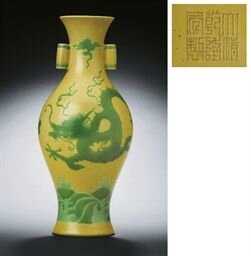![02_Alvar_Aalto_in_his_studio]()
Alvar Aalto in his studio, 1945.© Alvar Aalto Foundation. Photo: Eino Mäkinen / Alvar Aalto Museum
HELSINKI.- Alvar Aalto (1898–1976) is the most internationally famous Finnish architect and designer. Alvar Aalto – Art and the Modern Form opens up new perspectives into Aalto's life and work. The comprehensive exhibition illustrates how Aalto's thinking and design idiom developed in interaction with contemporary visual artists. In addition to presenting Aalto's extensive oeuvre, works are also being featured from his close friends and modernist masters, such as the American Alexander Calder and the Frenchman Fernand Léger. The exhibition also highlights the role of the Artek furniture and design company, established in 1935, as a contributor to the Finnish art scene. The exhibition is produced by the Vitra Design Museum, in cooperation with the Alvar Aalto Museum and the Ateneum Art Museum.
Alvar Aalto was one of the most influential figures in international modernism
"Alvar Aalto's work showed a broad understanding of the arts. His circle of acquaintances included a large number of people who were agents of change in their time and who sought new forms of expression. We want to highlight these connections. The Ateneum is a house for all artistic disciplines: the facade of the museum building features caryatides, carved in 1887, symbolising architecture, geometry, painting and sculpture", says the museum director, Susanna Pettersson.
Aalto was a fully-fledged cosmopolitan with a global network of contacts: he and his wife, the architect Aino Marsio-Aalto (1894–1949), were internationally active, starting in the 1920s. The idea of Gesamtkunstwerk, a total work of art, was important to Aalto: he worked across multiple disciplines, including architecture, urban planning, design, and art.
Assembled by the chief curator of the Vitra Design Museum, Jochen Eisenbrand, the retrospective exhibition presents Aalto's life and work from the 1920s to the 1970s. The exhibition features a wealth of iconic objects and pieces of furniture, as well as architectural drawings and scale models. Interdisciplinarity in art, and Aalto's multi-disciplinarity, is being highlighted through archive materials, works of art, photographs and short films. The exhibition also features new photographs of Aalto's architecture, taken by the German photographic artist Armin Linke. Before arriving in Helsinki, the exhibition was shown at the Vitra Design Museum in Germany; in Madrid and Barcelona in Spain; and in Aalborg in Denmark.
![aalto_alvar_tuberculosis_sanatorium]()
Paimio sanatorium, Paimio, Finland, Alvar Aalto, 1928-1933. © Alvar Aalto Foundation. Photo: Gustaf Welin / Alvar Aalto Museum
![aalto_alvar_vyborg_city_library]()
Armin Linke: Viipuri (Vyborg) City Library, Vyborg, Karelia (today Russia), Alvar Aalto, 1927-1935. © Armin Linke, 2014
![aalto_alvar_nojatuoli_41_paimio]()
Alvar Aalto: Armchair 41 "Paimio", 1932. Vitra Design Museum. Photo: Jürgen Hans
![aino_aalto_paimio_nojatuolissa]()
Aino Aalto in Paimio chair, photo montage, 1930s. © Alvar Aalto Foundation, Artek Collection
![aalto_alvar_savoy_maljakko]()
Alvar Aalto: Savoy vase, 1936. © Vitra Design Museum. Photo: Vitra Design Museum / Alexander von Vegesack, 2014
![aalto_aino_bolgeblick_sarja]()
Aino Aalto: Bölgeblickseries, 1936.© Vitra Design Museum. Photo: Vitra Design Museum / Alexander von Vegesack, 2014 / Andreas Sütterlin
![aalto_alvar_villa_mairea]()
Armin Linke: Villa Mairea, Noormarkku, Finland, Alvar Aalto, 1938. © Armin Linke, 2014
![aalto_alvar_finnish_pavilion_new_york]()
Finnish pavilion, World’s Fair, New York, 1939. © Esto Photographics. Photo: Ezra Stoller / Esto Photographics Inc.
![aalto_alvar_riippuvalaisin_a_331]()
Alvar Aalto: Pendant Lamp A 331, ”Beehive”, 1953. © Vitra Design Museum, 2014. Photo: Vitra Design Museum / Andreas Jung
![aalto_alvar_maison_louis_carre]()
Armin Linke: Maison Louis Carré, Bazoches-sur-Guyonne, France, Alvar Aalto, 1956–1959, 1961–1963. © Armin Linke, 2014
![alvar_aalto_veneessaan_1960_luvulla]()
Alvar Aalto in his boat, Nemo Propheta in Patria, 1960s.© Christine and Göran Schildt Foundation. Photo: Göran Schildt.
The Ateneum exhibition features four halls of visual art by Aalto's artist friends
The Ateneum brings another perspective to the exhibition with the inclusion of works by artists closest to Aalto, including the German-French Hans Arp (1886–1966), the American Alexander Calder (1898–1976), the Frenchman Fernand Léger (1881–1955), and the Hungarian László Moholy-Nagy (1895–1946). The exhibition features a large number of works from Villa Mairea, a private residence in Noormarkku that Aalto designed for Maire Gullichsen and her husband. Most of the works being shown at the exhibition were originally introduced to Finland through art exhibitions organised by Artek, and through people in Aalto's inner circle. Artek's exhibitions left a permanent imprint on the Finnish art world and on the Ateneum Art Museum's collection.
Produced by the Ateneum, the publication Alvar Aalto – Art and the Modern Form discusses Artek's exhibition activities and highlights the life's work of Aino Marsio-Aalto in the arenas of art, design and architecture. Edited by the chief curator, Sointu Fritze, the publication features articles by Jochen Eisenbrand, Susanna Pettersson, and Renja Suominen-Kokkonen. The publication is available in Finnish, Swedish and English.
![moholy_nagy_laszlo_kestnermappe_nro_6]()
László Moholy-Nagy: Kestnermappe, no. 6, 1923. Private collection. Photo: Finnish National Gallery/ Jenni Nurminen
![leger_fernand_soittimia]()
Fernand Léger: Musical Instruments, 1926. Finnish National Gallery / Ateneum Art Museum. Photo: Finnish National Gallery / Jouko Könönen
![moholy_nagy_laszlo_nimeton_berliini]()
László Moholy-Nagy: Untitled, Berlin, 1929. Museum Folkwang, Essen. Photo: Museum Folkwang, Essen
![calder_alexander_mobile_hannu_aaltonen]()
Alexander Calder: Mobile, 1930s. Finnish National Gallery / Ateneum Art Museum. Photo: Finnish National Gallery / Hannu Aaltonen
![leger_fernand_composition_aux_contrastes]()
Fernand Léger: Composition aux contrastes (Contrasting Composition), 1932. Mairea Foundation. Photo: Mairea Foundation / Rauno Träskelin
![picasso_pablo_malli_ja_surrealistinen_veistos]()
Pablo Picasso: Model and Surrealist Sculpture, 1933. Finnish National Gallery / Ateneum Art Museum. Photo: Finnish National Gallery / Hannu Aaltonen
![picasso_pablo_kaksi_katalonialaista_juomaria]()
Pablo Picasso: Two Catalan Drinkers, 1934. Finnish National Gallery / Ateneum Art Museum. Photo: Finnish National Gallery / Hannu Aaltonen
![leger_fernand_etoile_jaune]()
Fernand Léger: Etoile jaune (Yellow Star), 1937. Mairea Foundation. Photo: Mairea Foundation / Rauno Träskelin
![leger_fernand_nimeton]()
Fernand Léger: Untitled, 1937. Finnish National Gallery / Ateneum Art Museum. Photo: Finnish National Gallery / Hannu Aaltonen
![tapiovaara_tapio_fernand_leger_luennoi_helsingissa]()
Tapio Tapiovaara: Fernand Léger Lecturing in Helsinki, 1937. Finnish National Gallery / Ateneum Art Museum. Photo: Finnish National Gallery / Hannu Aaltonen
![calder_alexander_tache_rouge]()
Alexander Calder: Tache Rouge (Red Spot), 1940s. Mairea Foundation. Photo: Finnish National Gallery / Hannu Aaltonen
![calder_alexander_jeu_abstrait]()
Alexander Calder: Jeu abstrait (Abstract Play), 1945. Mairea Foundation. Photo: Finnish National Gallery / Kirsi Halkola
![arp_hans_arp_tahtiperhe]()
Hans Arp: Family of Stars, 1955. Artek Collection
![arp_hans_torso]()
Hans Arp: Torso (Feuille / Leaf), 1959 (based on a collage from 1941). Portfolio of silk-screen prints 75/75, Éditions Denise René, Paris. Mairea Foundation. Photo: Finnish National Gallery / Hannu Aaltonen


























































